ZEN IRODALOM ZEN LITERATURE
« Zen főoldal
« vissza a Terebess Online nyitólapjára
破有法王 Hau Hōō [冨永秀甫 Tominaga Shūho]
現代相似禅評論
(Rōmaji:)
Gendai sōjizen hyōron
(English:) A Critique of Present-day Pseudo-Zen
(Magyar:) A mai ál-zen kritikája
Compiled in 1916 by 破有法王 Hau Hōō (”The Arch-Destroyer of the Existent Order”) [pseud. 冨永秀甫 Tominaga Shūho]
Gendai sōjizen hyōron 現代相似禪評論 Tokyo: Shūbunsha, 1916. Reprint: 1935. 2nd reprint: 1971, Tokyo: Mizuoho Shoten
1.
[Translation of the first part of Gendai sōjizen hyōron]
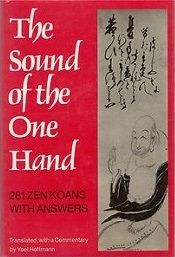
PDF: The Sound of the One Hand:
281 Zen Koans with Answers, tr. with a commentary by Yoel Hoffmann;
foreword by Zen Master Hirano Sōjō; introd. by Ben-Ami Scharfstein,
Basic Books, New York, 1975. Paladin, St. Albans, 1977, 344 p.
Never before has it been possible for an English-speaking reader to experience the profound exchange which occurs between a Zen master and his student. Here for the first time, is the series of questions, or "koans", together with the answers, through which the Zen master initiates the novice into the wisdom of Zen. (from front flap)
"When the Japanese edition of this book, Gendai Sōjizen Hyōron ("A Critique of Present-day Pseudo-Zen"), was first published in 1916, it caused a great sensation. The reason for this lay in the fact that the koans and their answers had been secretly transmitted from master to pupil in the Rinzai sect since the origination of the koan-teaching system in Japan by Zen Master Hakuin (1686-1769). This publication of the "secrets" of Zen seems to have, embarrassed many masters at that time. Furthermore, I have heard that the recent appearance of photocopies of this 1916 edition has caused alarm among Zen masters of today... More than fifty years have passed since the Japanese publication of Gendai Sōjizen Hyōron, which can now be said to deserve the status of a classic of Zen."
(From the foreword by Zen Master Hirano Sōjō)Excerpts from The Sound of the One Hand, pp. 47-51.
Translated into German, Chinese and Hebrew:
Hoffmann, Yoel: Der Ton der einen Hand. Die bisher geheimen Antworten auf die wichtigsten Zen-Koans. 1.Aufl., Otto Wilhelm Barth Verlag, Bern / München / Wien, 1978. 336 S.
禪門公案秘傳 : 隻手之聲 / 霍甫曼著 ; 徐進夫譯 (Taipei : 志文出版社, 1983)
2.
[Translation of the final part of Gendai sōjizen hyōron]
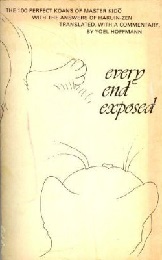
PDF: Every End Exposed:
The 100 Koans of Master Kidō with the Answers of Hakuin-Zen, tr. with a commentary by Yoel Hoffmann;
foreword by Hirano Sōjō;
Autumn Press, Brookline, Mass., 1977, 128 p.
A translation of 虚堂和尚語錄 Xutang heshang yulu [Japanese: Kidō oshō goroku / Kidōgoroku]
by the Chinese teacher 虚堂智愚 Xutang Zhiyu (1185-1269), Japanese: Kidō Chigu),
with comments by the Japanese teacher 白隱慧鶴 Hakuin Ekaku (1686–1769).
The present volume consists primarily of an annotated translation of the Kidōgoroku [The sayings of Master Kidō], a text held in very high regard by Zen practitioners. This ancient Chinese masterpiece, together with the later Japanese responses to it, constitutes the final part of the Gendai Sōjizen Hyōron.
I wish to draw the attention of the reader to the fact that in Master Kidō's comments to these hundred koans, there are also no secrets. These comments were made known to Zen novices and devotees right from the beginning. I think that they are as close as one can possibly come to a "perfect" answer to a koan, and, in my view, the "secret" answers later appended by Hakuin's school of Japanese Zen were, at best, superfluous.
(From the foreword by Zen Master Hirano Sōjō)
![]()
Kidō oshō goroku (Kidōgoroku). 100 Kōan
Deutsch von Guido Keller & Yamada Tarō
http://www.angkor-verlag.de
Kostenlose PDF-Version: https://docs.google.com/file/d/0B7mxGepKrr8IbFFTQWdPZFFkV0k/edit?pref=2&pli=1
![]()
Terminology
missan 密参 = secret study, ”The student might even keep a written record of the transmission, a missan notebook (missanchō), preserving the details of the encounters in which he received the teacher's secret instruction on a particular koan or series of kōans.” (Peter Haskel)
Missan-roku 密参録 = records of secret interviews; oral transmission (a book which describes the Zen questioning and answering carried out between Zen priests)
missanchō = esoteric commentary on kōans; records of kōan interviews; missan notebook
mitsumitsu sanketsu 密密参決 = resolution through meticulous instructions
”In Rinzai lineages these manuals are known as missanroku and missanchō (Records of Secret Instructions). In Soto these texts are referred to as monsan, a word that appears to be an abbreviation of the more descriptive term monto hissan (the secret instructions of this lineage).”
John Daido Loori, Thomas Yuho Kirchner: Sitting with Koans: essential writings on Zen Koan introspection”Tominaga Shuho first revealed the content and structure of missanroku when — under the pseudonym "Hau Hōō" (ie., a traditional term for Buddhism as the ”King of the Teachings that Refute Substantiality")—he published Gendai sōjizen no hyōron, a criticism of the kōan training taught in Rinzai lineages and one missanroku. The missanroku portion of Tominaga's book has been translated by Yoel Hoffmann, The Sound of the One Hand: 281 Zen Koans with Answers.”
William M. Bodiford : Sōtō Zen in medieval Japan
Bibliography
PDF: Zen and the Art of Nourishing Life: Labor, Exhaustion, and the Malady of Meditation
by Juhn Y. Ahn
Japanese Journal of Religious Studies 35/2: 177–229 © 2008 Nanzan Institute for Religion and Culture
PDF: Hakuin Ekaku: What is the Sound of One Hand Clapping
by Edward A. S. Ross
2016, Canons: The McGill Undergraduate Journal of Religious Studies
https://www.academia.edu/en/28821989/Hakuin_Ekaku_What_is_the_Sound_of_One_Hand_Clapping
What Is the Sound of One Hand Clapping?
Excerpts from The Sound of the One Hand, pp. 47-51.

Painting by Hakuin Ekaku (1686-1768)
The Way of the Inzan School
A. The Koan on the Sound of the One Hand
MASTER:
In clapping both hands a sound is heard: what is the sound of the one hand?
ANSWER
The pupil faces his master, takes a correct posture, and without a word, thrusts one hand forward.
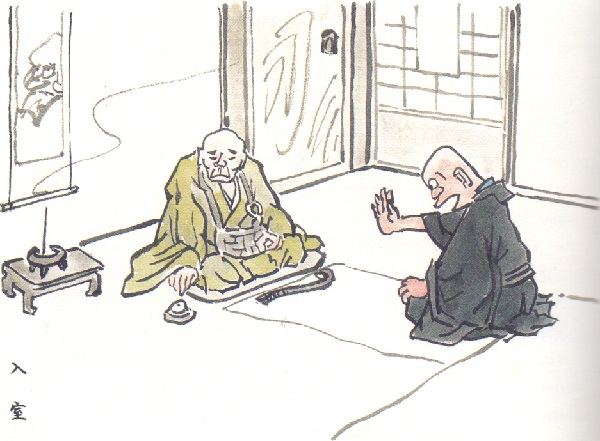
入室 Nisshitsu.
Watercolor sketch by 佐藤義英 Satō Giei (1921-1967) at 東福寺 Tōfuku-ji, Kyoto, 1939
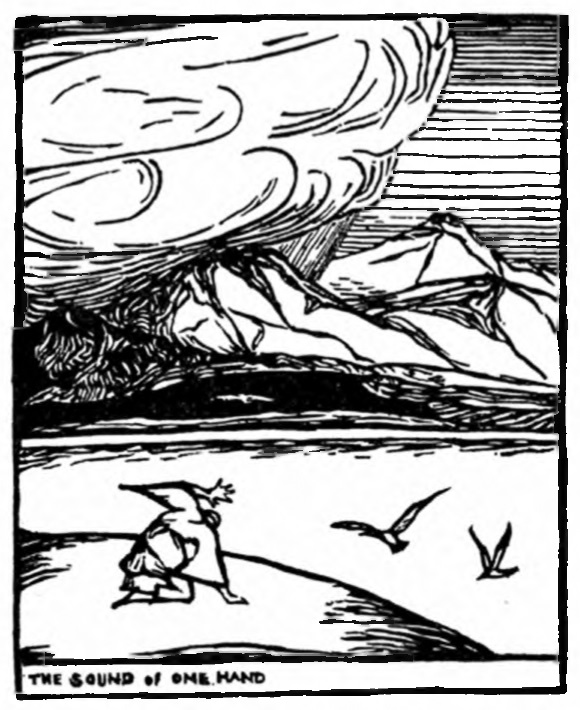
A woodcut by Hasuko (Mrs. Christmas Humphreys), 1949
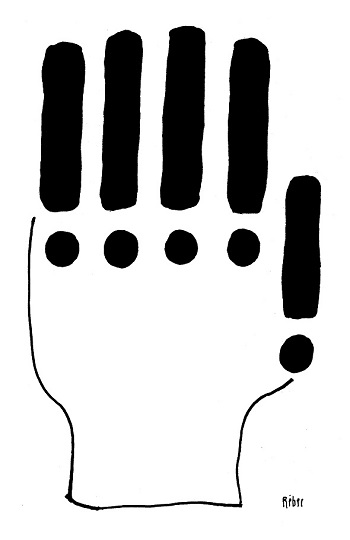
Drawing by László Réber (1920-2001)
Élet és Irodalom, Literary Weekly, Budapest, Vol. XVII. No. 18. May 5, 1973.
DISCOURSE
1.
MASTER:
If you've heard the sound of the one hand, prove it.
ANSWER:
Without a word, the pupil thrusts one hand forward.
2.
MASTER:
It's said that if one hears the sound of the one hand, one becomes a Buddha. Well then, how will you do it?
ANSWER:
Without a word, the pupil thrusts one hand forward.
3.
MASTER:
After you've become ashes, how will you hear it?
ANSWER:
Without a word, the pupil thrusts one hand forward.
4.
MASTER:
What if the one hand is cut by the Suimo Sword (the sharpest of all swords)?
ANSWER:
"It can't be."
Or
"If it can, let me see you do it." So saying, the pupil extends his hand forward.
Or
Without a word, the pupil thrusts one hand forward.
5.
MASTER:
Why can't it cut the one hand?
ANSWER:
"Because the one hand pervades the universe."
6.
MASTER:
Then show me something that contains the universe.
ANSWER:
Without a word, the pupil thrusts one hand forward.
7.
MASTER:
The before-birth-one hand, what is it like?
ANSWER:
Without a word, the pupil thrusts one hand forward.
8.
MASTER:
The Mt. Fuji-summit-one-hand, what is it like?
ANSWER:
The pupil shading his eyes with one hand, takes the pose of looking down from the summit of Mt. Fuji and says, "What a splendid view!" naming several places to be seen from Mt. Fuji - or others would name places visible from where they happen to be.
9.
MASTER:
Attach a quote to the Mt. Fuji-summit-one-hand.
ANSWER:
(Quote)
Floating clouds connected the sea and the mountain,
And white flat plains spread into the states of Sei and Jo.
10.
MASTER:
Did you hear the sound of the one hand from the back or from the front?
ANSWER:
Extending one hand, the pupil repeatedly says, "Whether it's from the front or from the back, you can hear it as you please"
Or
"From the back it's caw! caw! [the sound of a crow]. From the front it's chirp, chirp [the sound of a sparrow."
11.
MASTER:
Now that you've heard the sound of the one hand, what are you going to do?
ANSWER:
I'll pull weeds, scrub the floor, and if you're tired, give you a massage.
12.
MASTER:
If it's a convenient thing, let me hear it too!
ANSWER:
Without a word, the pupil slaps his master's face.
13.
MASTER:
The one hand - how far will it reach?
ANSWER:
The pupil places his hand on the floor and says, "This is how far it goes."
14.
MASTER:
The before-the-fifteenth-day-one-hand, the after-the-fifteenth-day-one-hand, what's it like?
ANSWER:
The pupil extends his right hand and says, "This is the before-the-fifteenth-day-one-hand." Extending his left hand he says, "This is the after-the fifteenth-day-one-hand." Bringing his hands together he says, "This is the fifteenth-day-one-hand."
15.
MASTER:
The sublime-sound-of-the-one-hand, what is it like?
ANSWER:
The pupil immediately imitates the sound he happens to hear when sitting in front of his master. That is, if it happens to be raining outside, he imitates the sound of rain, "Pitter-patter"; if at that moment a bird happens to call, he says, "Caw! Caw!" imitating a bird's call.
16.
MASTER:
The soundless-voice-of-the-one-hand, what is it like?
ANSWER:
Without a word, the pupil abruptly stands up, then sits down again, bowing in front of his master.
17.
MASTER:
The true-[mental]-sphere-of-the-one-hand, what's it like?
ANSWER:
"I take it to be as fleeting as a dream or phantom, or as something like an illusory flower. That's how I think of it."
18.
MASTER:
The source of the one hand, what is it?
ANSWER:
"On the plain there is not the slightest breeze that stirs the smallest grain of sand."
(Quote)
All communication with places north of the
White Wolf River is disconnected,
And south to the Red Phoenix City,
autumn nights have grown so long."
[...]
![]()
Terebess Gábor: Két haiku alá gyűrt kóan

(Hakuin-kóan)
le is rajzoltad
hogy' szól a taps fél kézzel
néma csend csattan
(Terebess-kóan)
ablak üvegét
pók mássza - agyonnyomnám
de belül vagyok
A Terebess-kóan megoldása:
A tanítvány szó nélkül bármely keze ügyébe eső felületen (vagy a levegőben) szétnyom egy nemlétező pókot.